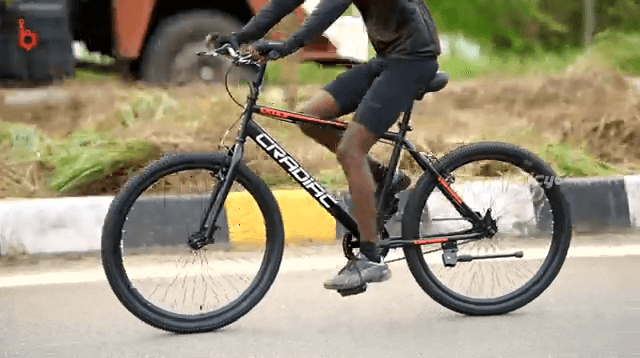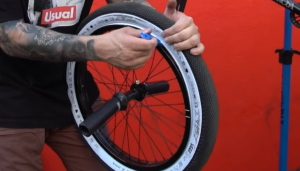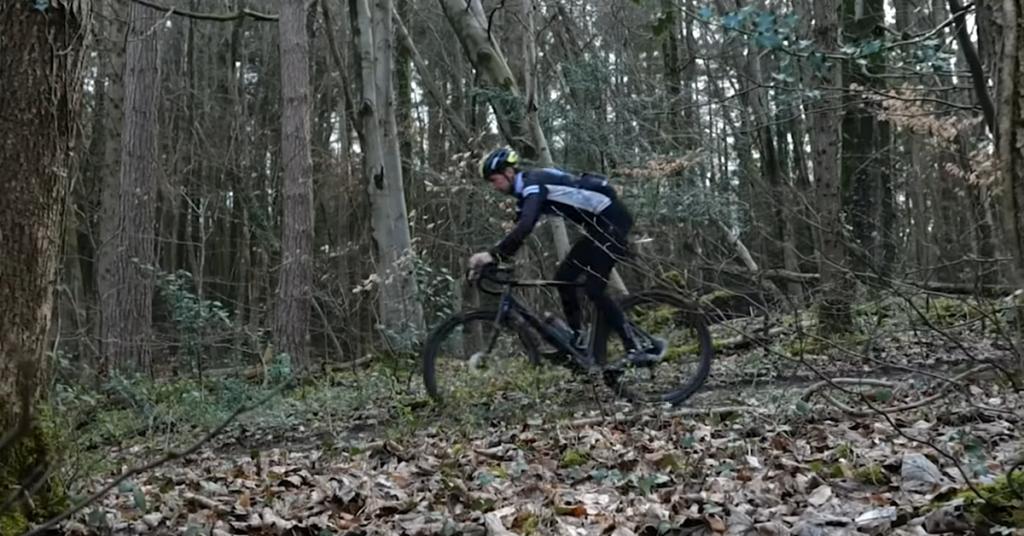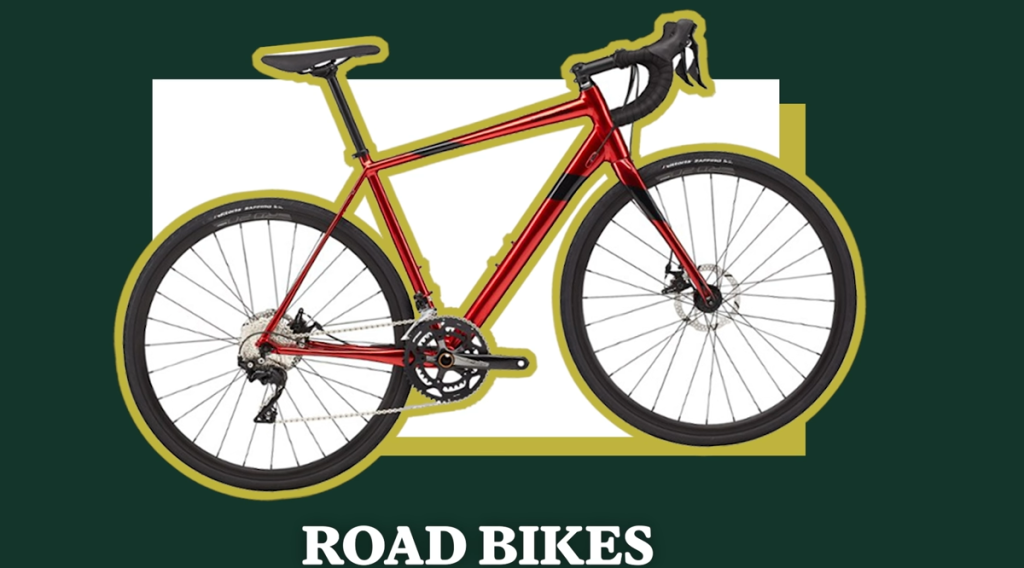How to choose a mountain bike
When selecting a mountain bike, there are several factors to consider. First, consider where and how you plan to use the bike. Different types of mountain bikes are designed for different types of terrain, so it’s essential to pick the right style for your needs. If you’re an experienced rider, consider getting a trail bike, cross-country bike, all-mountain bike, or fat tire bike. If you’re a beginner, look for a less expensive option that will still provide an enjoyable and safe ride. Additionally, make sure to consider the bike’s size and the frame’s strength when making your decision.
Get the correct size. How to choose mountain bike size.
Getting the right size for your mountain bike ensures you are comfortable and safe when riding. Before purchasing a mountain bike, measure your inseam and check the manufacturer’s sizing chart to determine the appropriate frame size. Generally, the distance between the seat and handlebars should roughly equal your instep.
Choose a wheel size.
Mountain bikes come with different wheel sizes, ranging from 26” to 29” and above. As a rule of thumb, if you are 5’2″ or shorter, you will likely feel more comfortable in a smaller size that is easier to maneuver. If you are 5’6″ or taller, go for the larger size.
Wheel size.
is one of the most important factors to consider when buying a mountain bike. The most common sizes are 26-inch, 27.5-inch (also known as 650b) and 29-inch. Different wheel sizes have different advantages and disadvantages that should be taken into account before making a purchase. For instance, 26-inch wheels are light and maneuverable, while 29-inch wheels roll over terrain more easily and provide a smoother ride. 27.5-inch provides an optimal balance of both worlds
Choose hardtail or full suspension.
When choosing the right mountain bike, you will need to decide between a hardtail or a full-suspension bike. Hardtails have a rigid frame and fork, providing excellent climbing efficiency and weight savings. Full-suspension bikes come with both a front and rear suspension system, allowing for more control when tackling rough terrain.
Hardtail mountain bikes are lighter and more efficient as there is no suspension on the rear wheel. As such, they are best suited for cross country, trail riding, and general recreational cycling.
Full-suspension bikes are designed for more technical rides, and feature both front and rear suspension. This extra suspension allows the bike to absorb more impact from obstacles on the trail, providing a smoother ride and greater control. So, if you’re looking to tackle rougher terrain or take part in downhill racing, then full-suspension is best option for you.
Decide on the type of suspension.
Mountain bikes feature different types of suspensions from full suspension (front and rear) to hardtails with no rear suspension choose a suspension type. Mountain bikes come with either full rest or front-suspension. Full-suspension bikes are ideal for rougher terrain, as they absorb more shock from the ground and offer greater control and stability. A front-suspension bike is more suitable for those who ride mainly on smooth terrain.
Your budget.
Of course, all the above will come at a cost. Your budget is another key factor when selecting your mountain bike and will largely depend on what type of riding you plan to do. If you’re just getting started, an entry-level hardtail should get you up and running without breaking the bank. If you plan on tackling more aggressive terrain, then a higher-end full-suspension mountain bike is the way to go.
Beware the flashy trinkets.
At the end of the day, choosing the right mountain bike boils down to finding a model that fits your budget and riding style best. Do some research and talk to other riders in order to get an idea of what bike is right for you. By taking the time to make sure you get the perfect mountain bike, you’ll be able to get more out of your experience and have a much better chance at enjoying your rides.
Choose suspension quality, not quantity.
When it comes to suspension, quality is more important than quantity. While full-suspension bikes have both front and rear suspensions for better control on rough terrain, these can add a lot of extra weight to your bike that could be better spent elsewhere. For most riders, a good quality hardtail with front suspension should provide ample control and climbing efficiency. Look out for technology upgrades, such as adjustable suspension systems, that offer better performance while still keeping the weight in check. Choose suspension quality over quantity and you’ll be sure to find a setup that works best for your riding style. Happy trails!…
Look for futureproof design.
Look for futureproof design. …Answer: When selecting your mountain bike, it’s important to look for futureproof designs. Modern frames and components are more robust and can last longer over time, meaning you won’t have to upgrade frequently. Look for frames that have a longer lifespan and can accommodate future upgrades, such as modern dropper posts, higher-end components, and better tires. A future-proof design will save you time and money in the long run, so it’s worth doing the research to find the right bike for you. Happy trails! Happy trails! Test ride before purchasing.
Keep some budget back.
Keep some budget back. When choosing a mountain bike, it’s important to keep some budget back for other items such as riding gear and extra accessories. Also, make sure to test ride any potential bikes before making the purchase. This will help you evaluate the components, frame geometry, and overall feel of the bike more accurately. When considering the components,
research the brands and models to make sure you’re getting the most for your money. Keeping some budget back will help you buy quality components that will last, and also give you more flexibility in making upgrades down the line. Happy trails!
Types of mountain bikes-how to choose mountain bike type.
Trail biking is an excellent option for those looking to get out and explore nature in a safe and fun way. Trail bikes are designed for maximum versatility, allowing you to navigate diverse terrain easily. Trail Bikes Trail bikes are a trendy type of mountain bike designed for various trail riding conditions. They are typically constructed with a suspension system to absorb shock and offer more traction while navigating off-road terrain. Trail bikes balance climbing ability and descending performance, resulting in an all-around versatile ride. Trail bikes come in various wheel sizes, from 27.5″ to 29″, and are perfect for riders looking to tackle just about any terrain. Whether you’re an experienced rider or a beginner, trail bikes are the ideal choice for those who want to experience the thrill of mountain biking while tackling diverse conditions.
Cross-Country Bikes
Cross-Country Bikes are another popular type of mountain bike designed specifically for racing and cross-country riding. These bikes are lightweight and designed to maximize efficiency on uphill and downhill trails. They feature hardtail frames with a rigid rear suspension, allowing quick movement and acceleration. Cross-country bikes come in two-wheel sizes: 27.5″ and 29″, offering riders different levels of manoeuvrability.
Fat-Tire Bikes
Fat-tire bikes are a type of mountain bike with wide, knobby tires designed for riding on loose or rugged terrain. These bikes can provide superior traction, handling, and stability in many different conditions. Fat-tire bikes are typically constructed with rigid frames and either a hardtail or full-suspension design. These bikes come in two wheel sizes: 26″ and 27.5″, offering riders different levels of manoeuvrability and control.
Downhill/Park Bikes
Downhill/Park Bikes are perfect for tackling steep, technical trails and challenging terrain. These bikes feature full-suspension frames with long-travel forks designed to absorb bumps and jump quickly. They also come with numerous features, such as a low centre of gravity, wide handlebars, and wide tires to ensure riders have complete control over their ride.
How to choose a mountain bike by height?
It’s essential to compare the listed stand over heights of mountain bikes with your inseam measurement to ensure a proper fit for you. The difference between your inseam and the stand over height should fall within the target range. For instance, if you have a 30″ inseam, aim for a mountain bike with a stand over height of approximately 28″. It will help ensure a comfortable and safe riding experience.
What are the two types of mountain bikes?
Mountain bike wheels and tires differ from those found on road bikes in width and size. Mountain bike tires are more extensive, increasing strength and durability when riding on rough terrain. These wider tires are designed to handle rocks, roots, and ruts, offering enhanced traction and stability on uneven ground. They are specifically built to withstand the challenges of off-road riding, making them more durable and grippy in demanding conditions.
What makes a mountain bike better?
Mountain bike tires are more extensive than road bike tires, providing increased strength and durability when tackling rough terrain. These tires are designed to handle obstacles such as rocks, roots, and ruts commonly found on off-road trails. Mountain bike wheels and tires are constructed to be durable and provide excellent grip on uneven ground, ensuring a stable and controlled riding experience in challenging conditions.
How to choose a MTB size?
Determining your frame size is often based on height, but some riders may find themselves between sizes. In such cases, deciding to go up or down a size depends on personal riding style and body proportions. Opting for a larger frame typically results in a more extended reach and wheelbase, enhancing stability, particularly during fast descents. This consideration is essential for riders seeking improved control and confidence in high-speed downhill sections.
What height is a 27.5 bike for?
27.5-inch bikes are suitable for heights, primarily catering to adults between 5’2″ and 5’10”. However, it’s worth noting that adults of all heights can ride bikes with this wheel size, as personal preferences and body proportions also play a role in determining the ideal bike fit.
What is the standard MTB tire size?
Most modern mountain bikes are available in 650b wheels or 29er wheels– the standard wheel sizes. The 26˝-wheel size is usually reserved for a few specific types of bikes. These include dirt jump bikes, freeride bikes, and kids’ bikes. Bikes are designed with this wheel size to suit the diverse needs of riders in different mountain biking disciplines.
What size tires are best for mountain bikes?
Narrower tires are known to provide slightly faster rolling speed on smooth trails. In XC racing, riders typically choose tires with a width ranging from 1.6 to 2.2 inches. On the other hand, trail, enduro, and downhill riders prefer wider tires, measuring 2.3 inches and above. Wider tires offer increased comfort, allowing for lower tire pressure, resulting in a smoother and more comfortable ride. The choice of tire width depends on the specific riding discipline and the desired balance between speed and comfort.
What are the three sizes of MTB wheels?
Currently, there are three primary wheel sizes available for MTB wheelsets. The smallest size is 26 inches, followed by the largest size, known as 29ers (or 700c in road bike terminology). The latest addition to the market is the 650b option, which serves as a midway point between the 26-inch and 29-inch wheel sizes.
Are mountain bikes ok for road use?
Mountain bikes may be less controlled than road bikes, but they’re also more resilient. They can handle rougher terrain & potholes better, which makes them a much safer option for commuters. Mountain bike tires are designed to ride on various surfaces, so it’s never a problem. Even if the road surface is rough, you get complete control and feel secure regardless of the conditions.
What is my frame size?
Sometimes, you may need to consider an individual’s body frame size. If a man stands taller than 5’5″ and has a wrist circumference of 6″, he would be classified as having a small-boned frame.
.






